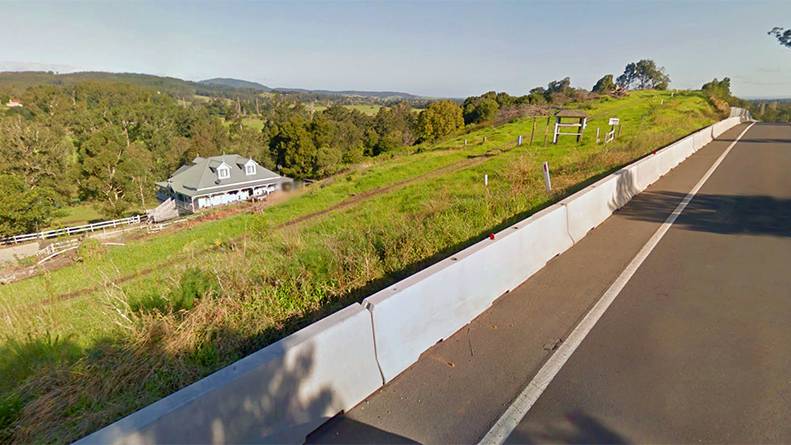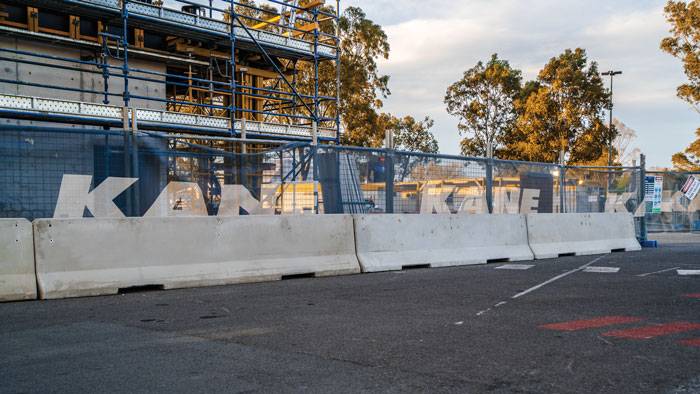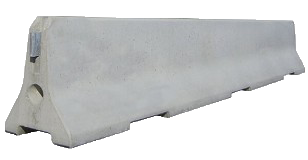How do Concrete Barriers deflect impact?
Concrete jersey barriers are frequently used across Australia’s roads to prevent vehicles from crossing the midline or leaving the roadway. They do this by absorbing the impact of out of control vehicles and safely redirecting them along the length of the barrier in order to cause the least possible damage.
Choosing a low deflection Concrete Barrier
The impact performance and subsequent deflection of temporary concrete barriers is influenced by a number of variables. These include the shape or profile of the barrier, its height, and the length of each module. The tensile strength and movement capacity of joints, as well as friction between the barrier and the roadway surface, are also contributing factors.
Correct installation of concrete barriers is important. Many state road authorities specify that concrete barriers must be installed in a minimum ‘run’ or length, and anchored at each end. However, they must not have any intermediate attachment to the road. This allows for the energy of an impact to be released throughout the length of barriers, often causing them to shift slightly in a wave-like pattern as they absorb the shock of impact. The measurement of how much a barrier shifts is the
The design of the joint connection plays a particularly critical role in the impact performance of the barrier. The design of this joint has a direct influence on the amount of lateral barrier deflection and degree of barrier rotation during impact.
Therefore, a concrete barrier that has a joint with inadequate strength or rigidity can cause the vehicle to become unstable. This ultimately can contribute to the failure of the connection itself, and produce greater than desired deflection.
In the worst case scenario, it can provoke penetration of the vehicle through the barrier.
So – An effective Concrete Barrier needs to be…
- a specific size and shape
- be installed in such a way that it dissipates energy on impact
- be installed in a minimum length so that it can offer effective crash containment
- be fixed to its neighbouring barrier modules with specialist connection joints
- plus, it must be tested in accordance with the Manual for Assessing Safety Hardware (MASH) and approved by Austroads.
Ensuring low deflection with the Deltabloc DB80 MASH Approved Concrete Barrier
The Deltabloc DB80 is an F-shape steel reinforced concrete temporary barrier, comprising 2, 4 or 6-metre unit lengths with a K150 tension bar coupling system and joint rotation limiting wedges.
With the patented Deltabloc coupling system, the DB80 allows a slight tilting of the impact energy in case of a heavy impact. The patented coupling and tension bar system is hot dip galvanized and the butt joint inserts minimise displacement.
Elastomer bearings between the single barriers ensure controlled damping of peak loads. This guarantees reliable breakthrough prevention for heavy vehicles and soft impact behaviour for small passenger cars.
Key Features of the Deltabloc
- Suitable for temporary and permanent use
- No concrete foundation needed
- No fixation to the ground
- Fast installation
- Damaged elements can be replaced easily
Deltabloc DB80: Rigourously tested for peace of mind
Deltabloc technology has been optimised in more than 130 full-scale crash tests, allowing Deltabloc DB80 barriers to deliver the best impact severity results available.
The DB80 F-Shape was specifically designed for applications where MASH is the relevant testing standard applied. The DB80 F-Shape has been successfully tested according to the MASH Test Level 3 (TL-3). It is approved by Austroads, NSW RMS, VicRoads, QLD Main Roads and DPTI South Australia.
Expert Assistance with more DB80 Specifications
Our specialist team of concrete and safety barrier experts can provide all the documentation you require including test reports and approvals for DB80 concrete barriers.
Get in touch with the team at Fortress Fencing for more information.




Want to know more?
Contact us today for more information about the products used or to learn how we can assist with your upcoming project!
